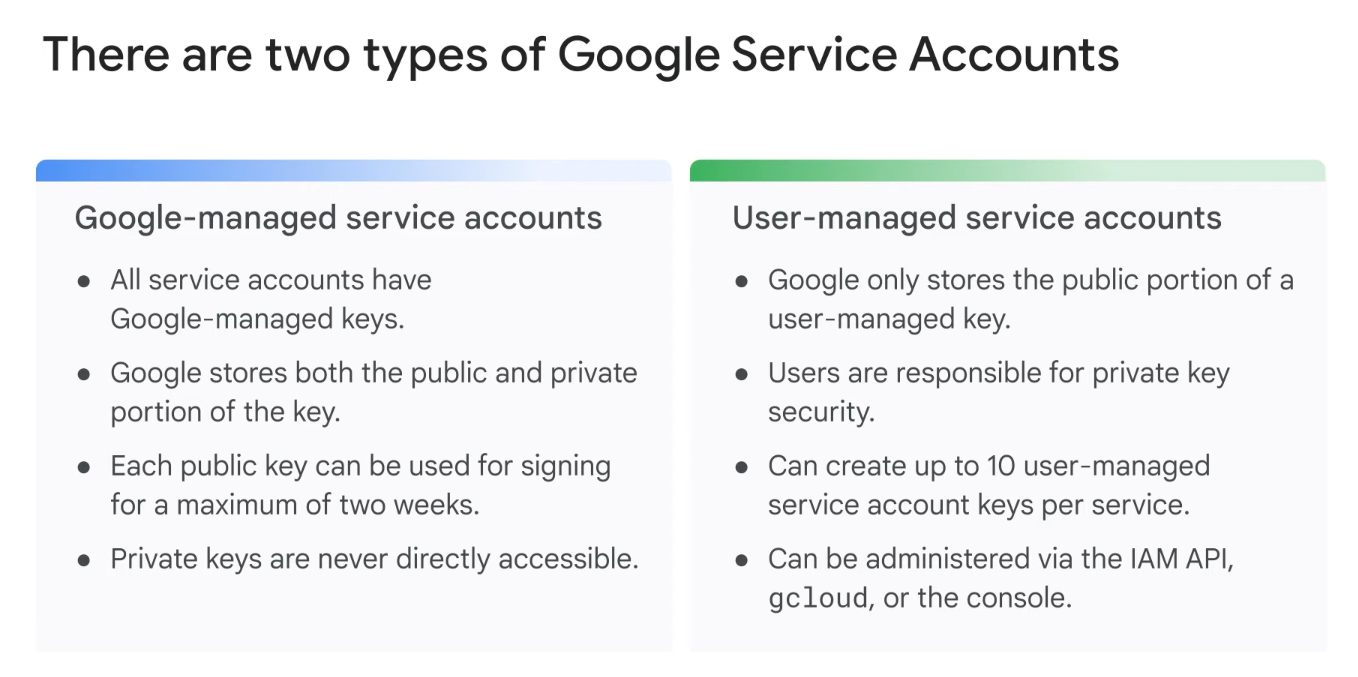IAM
Overview
- Identity
- Google account
- Service account
- Google Group
- Google Workspace domain
- Google Identity domain
- All authenticated users
- All users
- Roles
- Basic
- Viewer, Editor, Owner, and Billing Admin
- Predefined
- Compute Admin, Network Admin and etc.
- Custom
- Need to manage the permissions that define the custom role you have
- Custom roles can only be applied to either the project level and organized level
- Basic
- Condition
- Specified using Common Expression Language (CEL)
Note
It can take up to 80 seconds for such a change to take effect as it propagates. Read more about Google Cloud IAM in the Google Cloud IAMResource Documentation, Frequently asked questions.
Service Account
- Named with an email address
- Use a cryptographic key to access
- Use case: Authenticates seamlessly to the API without embedding any secret keys or credentials in your instance
- Type
- User-created
- Built-in (default for Compute Engine and App Engine)
- automatically created per project with an auto-generated name and email (has
-computeprefix eg. xxxxxxxx-compute@developer.gserviceaccount.com) - Automatically added as an editor role
- Enabled on all instances by default
- Scope (legacy, use Role instead)
- automatically created per project with an auto-generated name and email (has
- Google APIs service account

Workload Identity Federation
- Grant external identities IAM roles, including impersonating a service account
- Use a short-lived access token instead of a long-lived service account key
- Workload identity pools are collections of related identities for granting fine-grained access
- Workload identity provider describes the relationship between Google and external identity provider
- AWS
- Azure AD
- Okta
- Kubernetes clusters
- On-premises AD
Best practices
- Use the project to group the resources that share the same trust boundary
- Use "principles of least privilege" when grating role
- Audit policies in Cloud Audit Logs:
setiampolicy - Audit membership of groups used in polices
- Service accounts
- Give it a display name that clearly identifies its purpose
- Establish a naming convention for service accounts
- Establish key rotation policies and methods
- Audit with
serviceAccount.keys.list()method
- Use Identity-Aware Proxy (IAP) to enforce access control policies for applicators and resources